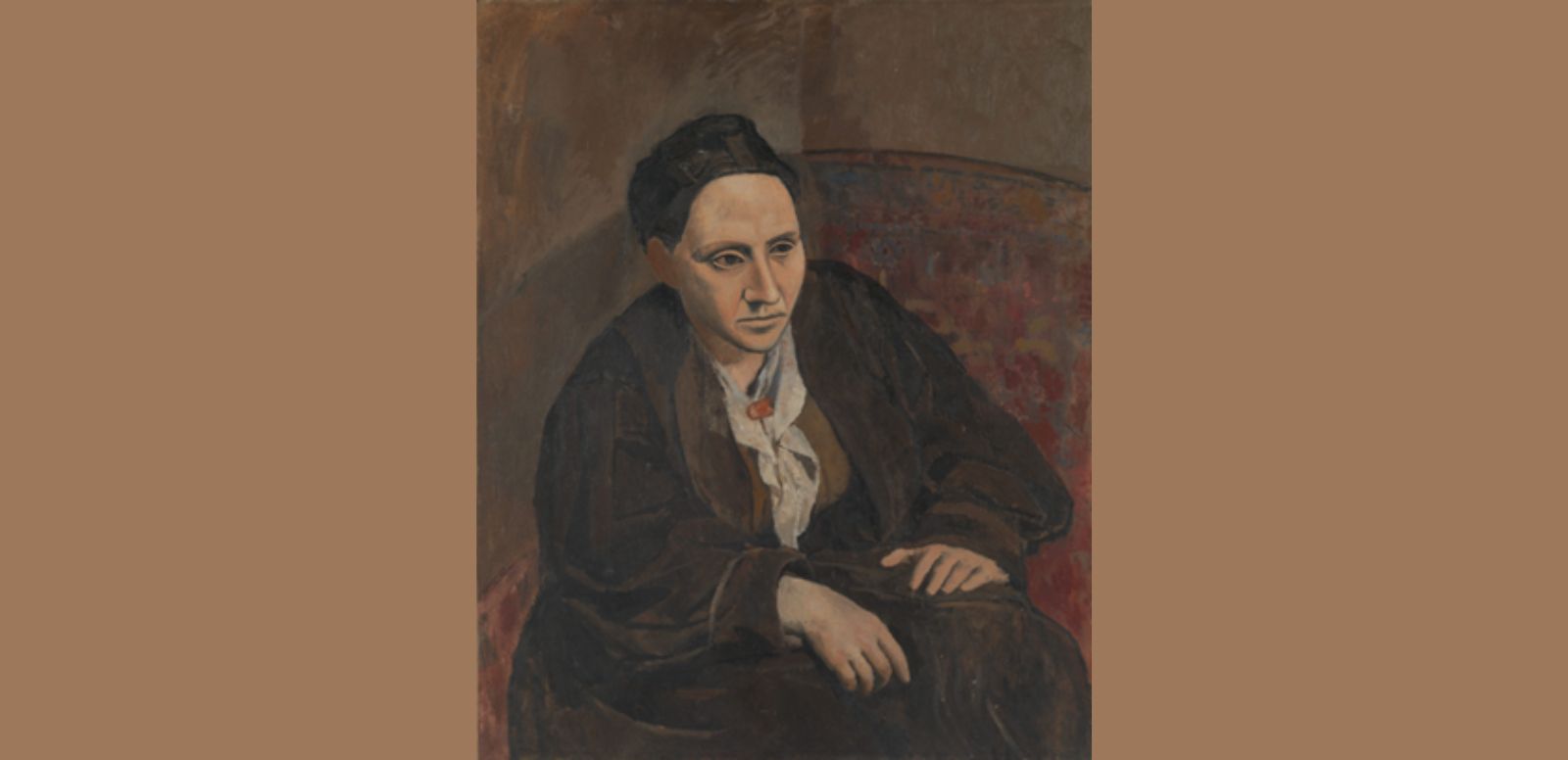
The Metropolitan Museum of Art, Nueva York
© Sucesión Picasso, VEGAP, Madrid, 2023
The Portrait of Gertrude Stein, painted by Pablo Picasso between 1905 and 1906, is a piece that encapsulates the profound relationship between the artist and Gertrude. In this portrait, Picasso immortalises his friend and patron in a depiction that goes beyond mere physical appearance and explores the identity and inner essence of the portrayed figure.
The artist, known for his inclination to work from memory or imagination, opted for a different technique and decided to paint this picture with the model present. Gertrude Stein says that she had to pose more than eighty times before Picasso was satisfied with her work. But that was not enough; one day the artist erased the head, saying: "I can't see it when I look at it". In the autumn of 1906 he finished the painting without having seen the model again and handed it over to the artist shortly afterwards.
The painting is notable for the imposing presence of Gertrude Stein, who is seated in a striking armchair and gazing intently to her left. Her large, robust figure is outlined with soft strokes, which lends a sense of naturalness and warmth despite the simplification of the forms. The position of the hands and arms recalls the painting by Jean-Auguste-Dominique Ingres, Portrait of Louis-Fraçois Bertin (1832), which Picasso saw in the Louvre.
The tones fade into the armchair, while the background takes on an abstract and expressive hue. However, it is in the face that the real artistic innovation emerges. Picasso challenges the traditional notion of the portrait by presenting a geometric and marked face, almost like an African mask. The features are flattened and defined, and the eyes, different in size and expressionless, anticipate the visual language that would characterise Cubism.
Picasso not only succeeded in immortalising his friend, but also laid the foundations for a new art form that would challenge conventional notions of representation. This work can undoubtedly be considered a bridge between reality and abstraction.
As part of the Picasso Celebration 1973-2023, the Musée du Luxembourg presents the exhibition Gertrude Stein and Picasso. The Invention of Language. The exhibition offers a detailed insight into the life of Gertrude Stein in close proximity to the Musée du Luxemburg, which she used to frequent regularly, and develops her close friendship with Picasso and her connections to the Parisian art scene, as well as her influence on the evolution of Cubism.
Sources:
Nota de prensa exhibición Retratos de Gertrude Stein de Picasso (Enero 22–Marzo 12, 1948. MoMA) https://www.moma.org/documents/moma_press-release_333022.pdf?_ga=2.40039522.1559314505.1691408445-64185839.1686818372
The Metropolitan Museum of Art: https://www.metmuseum.org/perspectives/articles/2020/1/felix-vallotton-pablo-picasso-gertrude-stein

